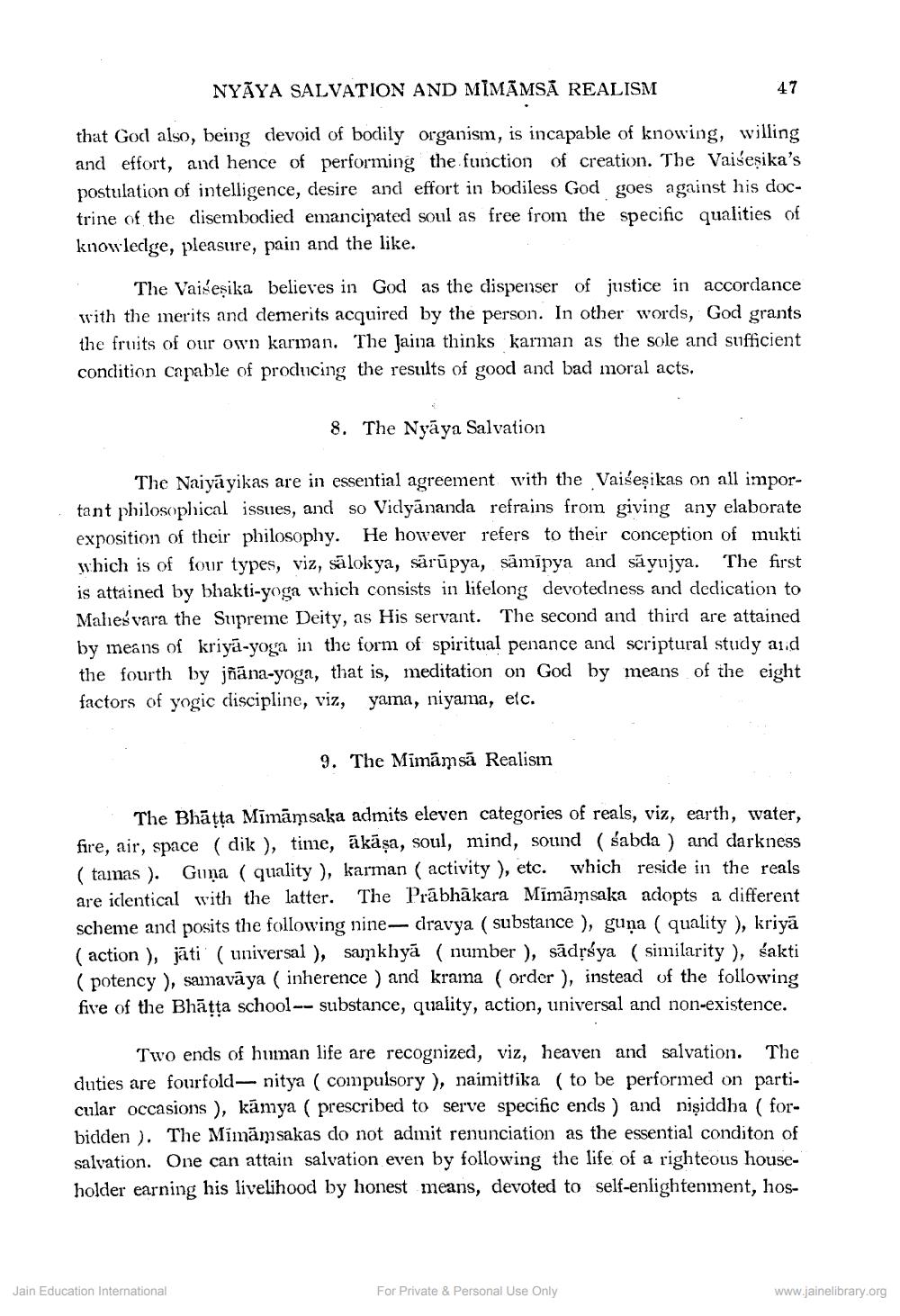________________
NYAYA SALVATION AND MIMAMSĂ REALISM
that God also, being devoid of bodily organism, is incapable of knowing, willing and effort, and hence of performing the function of creation. The Vaiseşika's postulation of intelligence, desire and effort in bodiless God goes against his doctrine of the disembodied emancipated soul as free from the specific qualities of knowledge, pleasure, pain and the like.
The Vaiseṣika believes in God as the dispenser of justice in accordance with the merits and demerits acquired by the person. In other words, God grants the fruits of our own karman. The Jaina thinks karman as the sole and sufficient condition capable of producing the results of good and bad moral acts.
47
8. The Nyaya Salvation
The Naiyayikas are in essential agreement with the Vaisesikas on all important philosophical issues, and so Vidyananda refrains from giving any elaborate exposition of their philosophy. He however refers to their conception of mukti which is of four types, viz, sälokya, sarūpya, samīpya and sayujya. The first is attained by bhakti-yoga which consists in lifelong devotedness and dedication to Mahes vara the Supreme Deity, as His servant. The second and third are attained by means of kriya-yoga in the form of spiritual penance and scriptural study and the fourth by jñana-yoga, that is, meditation on God by means of the eight factors of yogic discipline, viz, yama, niyama, etc.
9. The Mimamsa Realism
The Bhāṭṭa Mimamsaka admits eleven categories of reals, viz, earth, water, fire, air, space (dik), time, ākāṣa, soul, mind, sound (sabda) and darkness which reside in the reals (tamas). Guna (quality), karman (activity), etc. are identical with the latter. The Prabhakara Mimamsaka adopts a different scheme and posits the following nine-dravya (substance), guna (quality), kriya (action), jāti (universal), samkhya (number), sadṛśya (similarity), śakti (potency), samavaya ( inherence) and krama (order), instead of the following five of the Bhaṭṭa school-- substance, quality, action, universal and non-existence.
Two ends of human life are recognized, viz, heaven and salvation. The duties are fourfold- nitya (compulsory), naimittika (to be performed on parti cular occasions), kamya ( prescribed to serve specific ends) and nisiddha (forbidden). The Mimamsakas do not admit renunciation as the essential conditon of salvation. One can attain salvation even by following the life of a righteous householder earning his livelihood by honest means, devoted to self-enlightenment, hos
Jain Education International
For Private & Personal Use Only
www.jainelibrary.org




